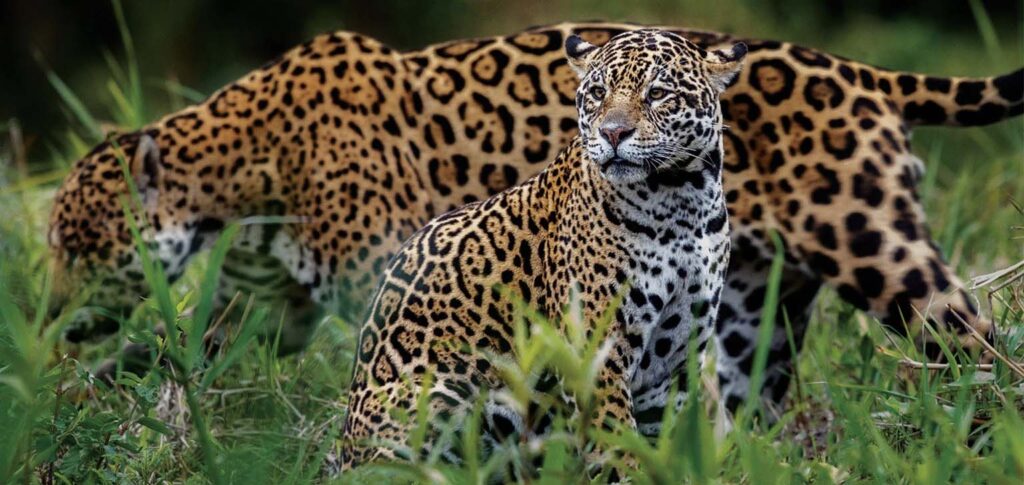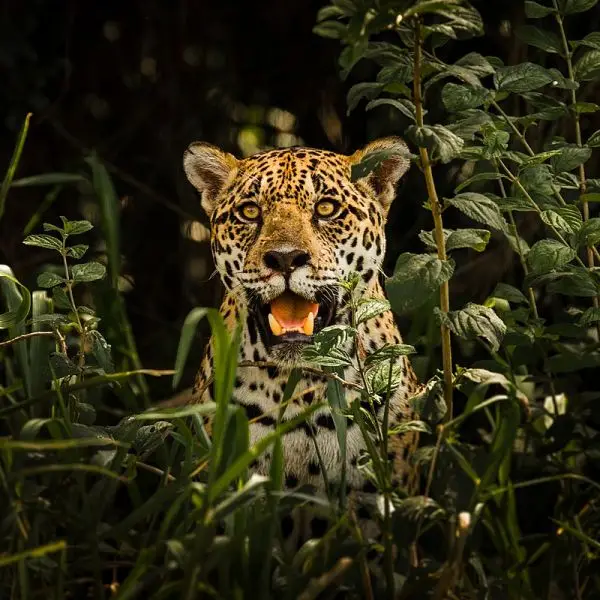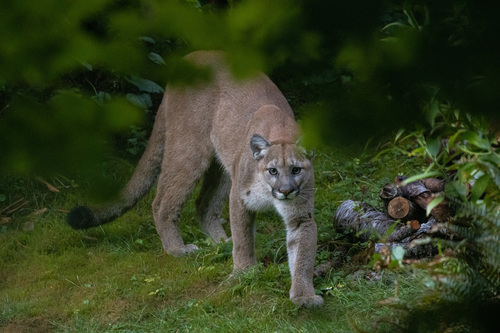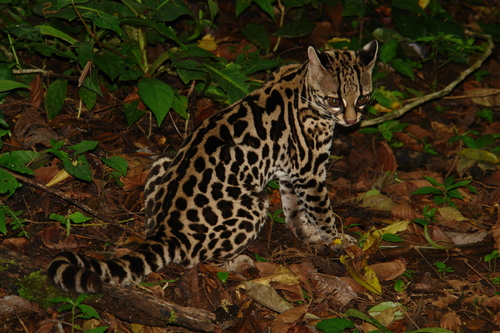Feline species of Costa Rica

In Costa Rica, there are six species of wild cats that are currently at high risk of extinction. However, all of them are currently threatened or endangered. Hunting, habitat destruction, roadkill in biological corridors, and environmental pollution are the main threats to these fascinating predators.
The wild felines that inhabit Costa Rican territory are:
- Jaguar (Panthera onca)
- Puma (Puma concolor)
- Ocelot (Leopardus pardalis)
- Jaguarundi (Puma yagouaroundi)
- Caucel or Margay (Leopardus wiedii)
- Northern Tiger Cat (Leopardus tigrinus)
Here is a detailed overview of each of these species, their characteristics, and their ecological importance.
Jaguar (Panthera onca)
The jaguar, Panthera onca, is the largest cat in the Americas and plays a crucial role in maintaining healthy ecosystems. It also sits at the top of the food chain. It has the strongest bite of any cat in the world, even more powerful than that of lions and tigers.
Its coat, characterized by rosette-shaped spots, allows it to camouflage itself among dense vegetation. Although it mainly inhabits tropical rainforests, it can also be found in savannas, grasslands, and swamps.
Jaguars are excellent swimmers and climbers, which expands their diet to include animals such as turtles, alligators, and medium-sized mammals. They are territorial and solitary animals. Females can have between one and four cubs, which remain with her until they are about two years old to learn how to hunt.
Features of the Jaguar
- Weight: 151–299 lbs (68–136 kg)
- Length: 1.5–1.85 m
- Altitude: 0–2,000 m
- Diet: Strict carnivore
- Life expectancy: 20 years in captivity, 12–15 years in the wild



Puma (Puma concolor)
The cougar is the feline with the widest distribution across the American continent, from Canada to Argentina. This is due to its extraordinary ability to adapt. In temperate zones, it consumes large prey, while in tropical regions it incorporates smaller animals, such as monkeys.
As a carnivorous predator, it plays a crucial role in the balance of ecosystems, regulating prey populations and keeping natural habitats healthy.
Features of the Puma
- Weight: 54 – 264 lb
- Length: 0.8–1.5 m
- Altitude range: 0–5,800 m
- Diet: Strict carnivore
- Life expectancy: 20 years in captivity, 18–20 years in the wild



Ocelot (Leopardus pardalis)
Known as the prince of the night, the ocelot travels between 6 and 7 kilometers every night in search of prey. Although much smaller than the jaguar, it is the largest cat of the genus Leopardus.
Its adaptation to different habitats with dense foliage has earned it the nickname “manigordo”, due to the size of its legs. It feeds mainly on small rodents, capturing an average of one prey per kilometer traveled.
Features of the Ocelot
- Weight: 19 to 35 pounds
- Length: 0.6 – 0.97 m
- Altitude range: 1200–3800 m
- Diet: Strict carnivore
- Life expectancy: 21 years in captivity, 20 years in the wild



Jaguarundi (Puma yagouaroundi)
The jaguarundi stands out for its unique appearance, more similar to a weasel than a traditional feline. Despite this, it shares ancestors with pumas. Its coat can be grayish or reddish, depending on its habitat; for this reason, it was once believed to be a different species.
As opposed to other medium-sized and small felines in Costa Rica, the jaguarundi is diurnal, which allows it to avoid direct competition with ocelots and cougars.
Features of the Jaguarundi
- Weight: 9 –19 lb
- Length: 0.5–0.77 m
- Altitude range: 0–3,200 m
- Diet: Strict carnivore
- Life expectancy: 15 years in captivity, 12 years in the wild



Caucel o Margay (Leopardus wiedii)
This small feline is a master of tree climbing. It spends most of its time in trees, thanks to its amazing ability to climb and jump between branches. For this reason, it is also called the “arboreal ocelot,” as it closely resembles the ocelot, but is smaller and even more adapted to life in trees.
Features of Caucel
- Weight: 5.8–8.2 lbs
- Length: 0.46 – 0.79 m
- Altitude range: 0–1,500 m
- Diet: Strict carnivore
- Life expectancy: 20 years in captivity, 13 years in the wild



A call for conservation
Costa Rica’s felines play vital roles in maintaining ecological balance. Without them, prey populations could spiral out of control, affecting forests, rivers, and the entire chain of life that sustains our ecosystems.
Protecting them is everyone’s responsibility. Respecting speed limits in biological areas, supporting conservation programs, preventing habitat fragmentation, and reporting illegal hunting are key actions to ensure their survival.
Sensorial Sunsets





